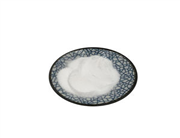4-Ethylguaiacol, often abbreviated to 4-EG, is a phenolic compound with the molecular formula C9H12O2. It is produced along with 4-ethylphenol (4-EP) in wine and beer by the spoilage yeast Brettanomyces. When it is produced by the yeast to concentrations greater than the sensory threshold of >600 µg/L, it can contribute bacon, spice, clove, or smoky aromas to the wine. On their own these characters can be quite attractive in a wine, however as the compound usually occurs with 4-EP whose aromas can be more aggressive, the presence of the compound often signifies a wine fault. The ratio in which 4-EP and 4-EG are present can greatly affected the organoleptic properties of the wine.
| Name | 4-Ethyl-2-methoxyphenol | EINECS | 220-500-4 |
| CAS No. | 2785-89-9 | Density | 1.051 g/cm3 |
| PSA | 29.46000 | LogP | 1.96320 |
| Solubility | N/A | Melting Point | 15 °C(lit.)
|
| Formula | C9H12O2 | Boiling Point | 246.5 °C at 760 mmHg |
| Molecular Weight | 152.193 | Flash Point | 107.8 °C |
| Transport Information | UN 2810 | Appearance | clear colorless to light yellow liquid |
Appearance and properties: transparent colorless to light yellow liquid
Density: 1.063 g/mL at 25 °C(lit.)
Boiling point: 234-236 °C(lit.)
Melting point: 15 °C(lit.)
Flash point: 226 °F
Refractive index: n20/D 1.528(lit.)
Vapor pressure: 0.0173mmHg at 25°C
Usage:Used as food additive and flavoring.









 China
China




